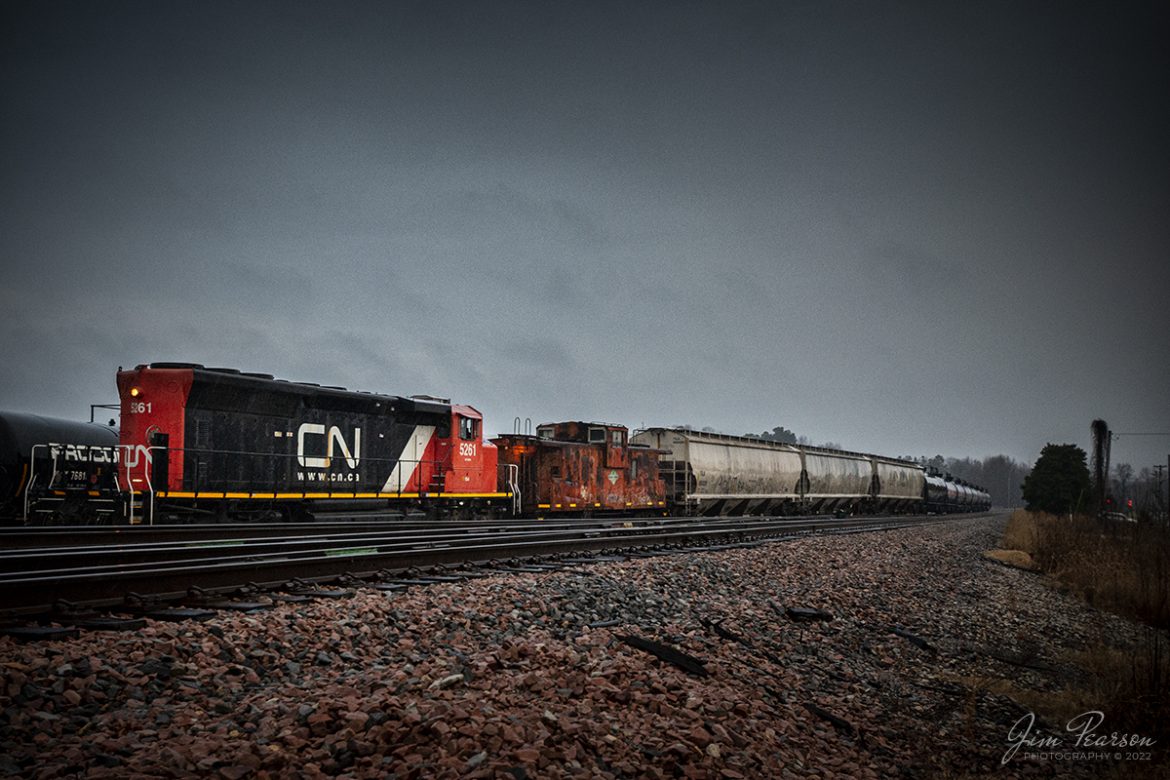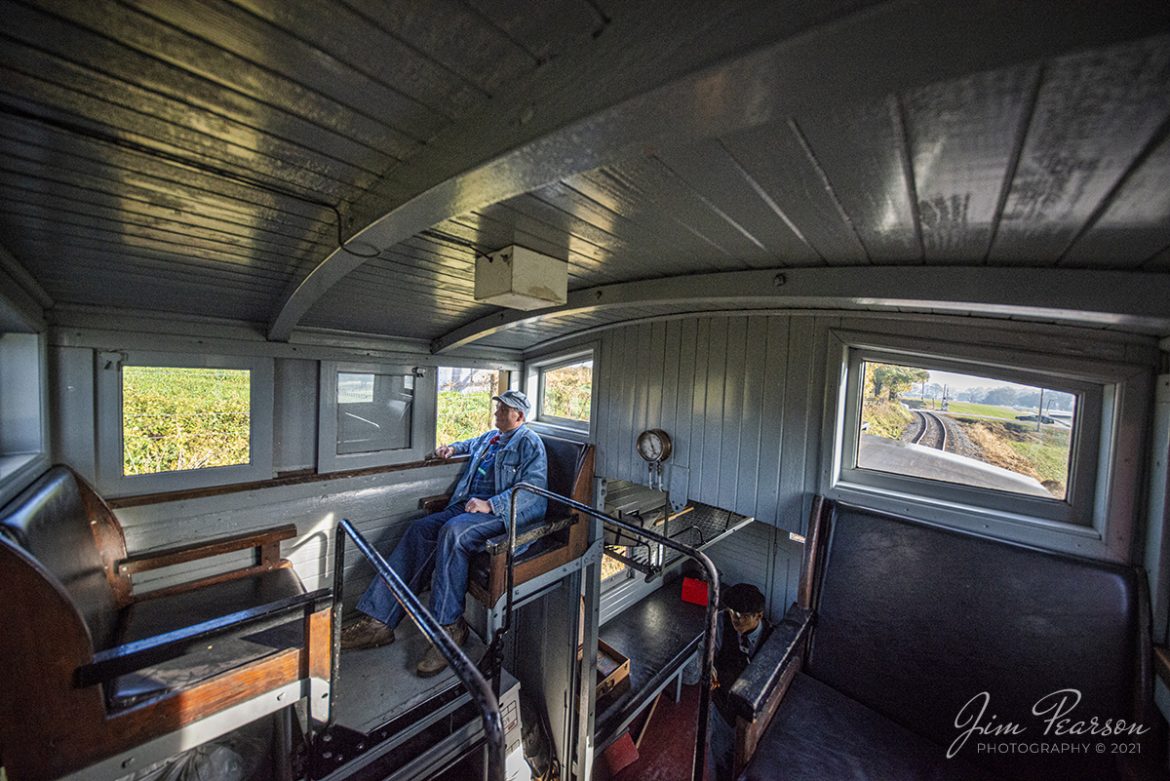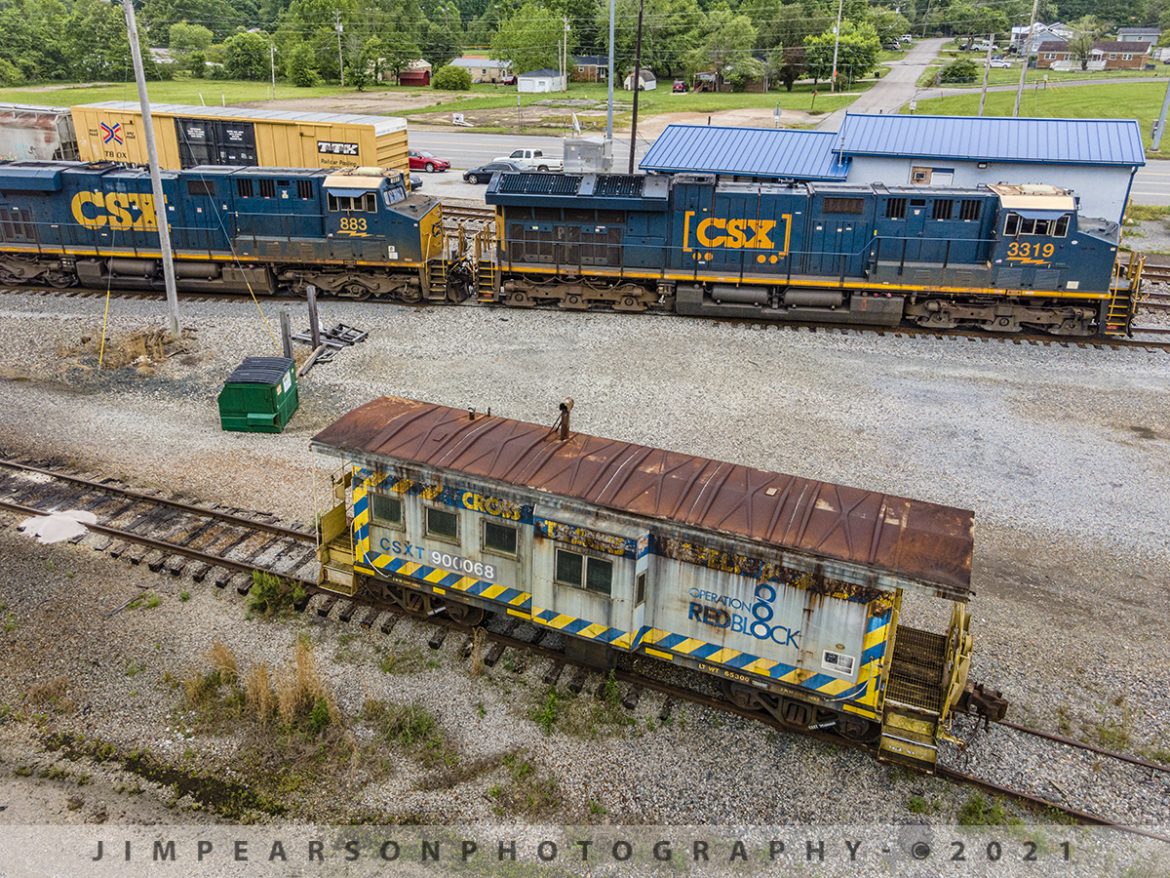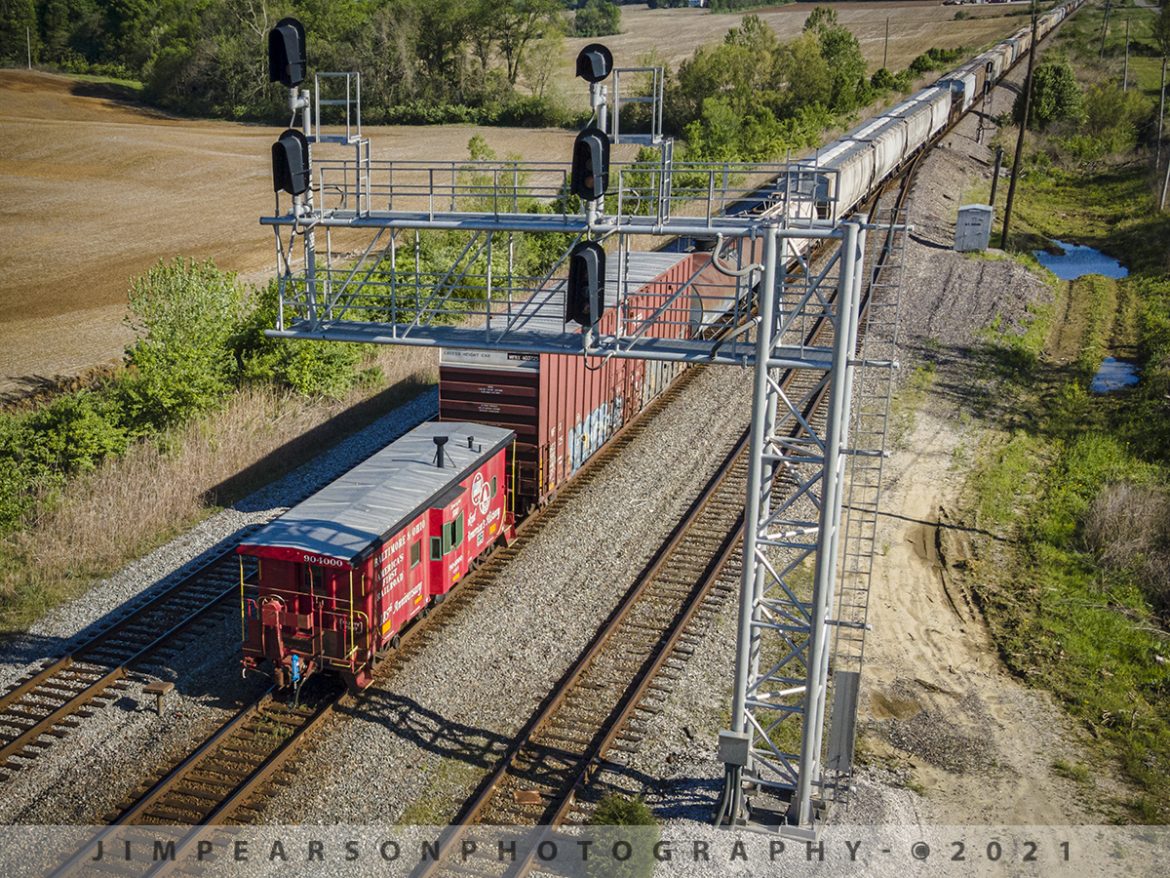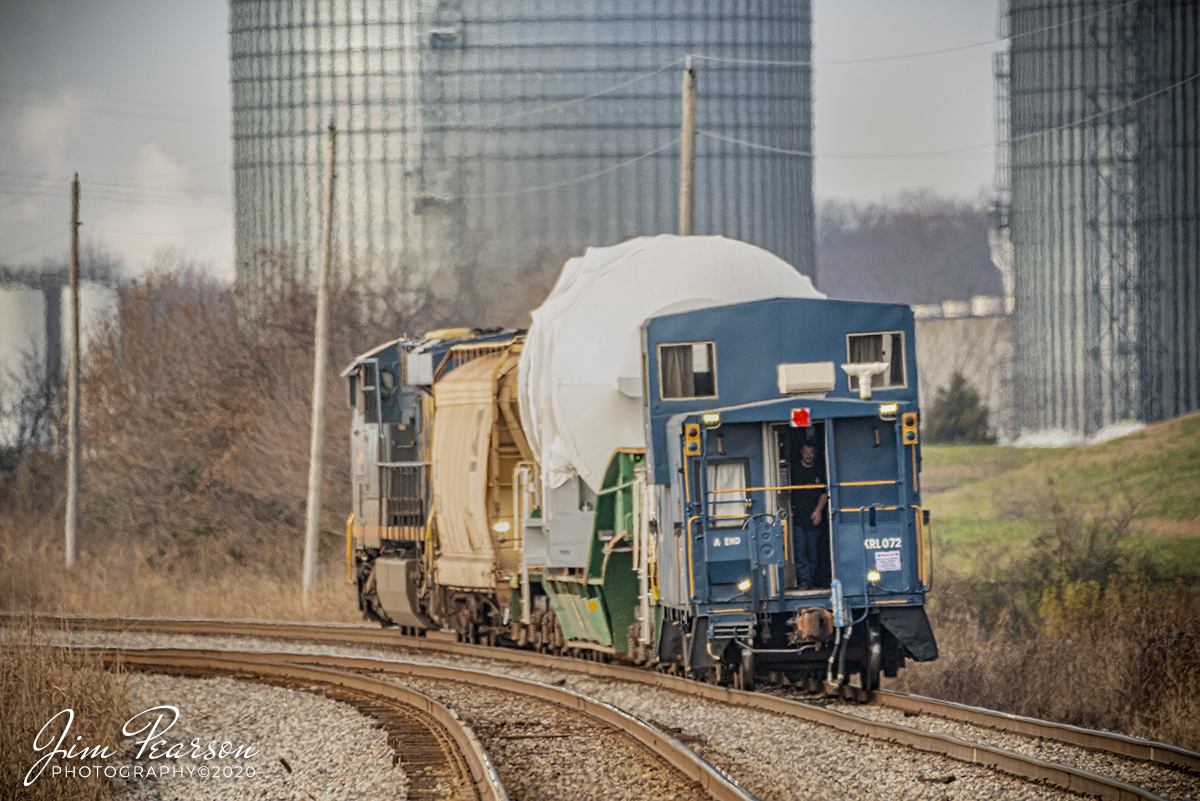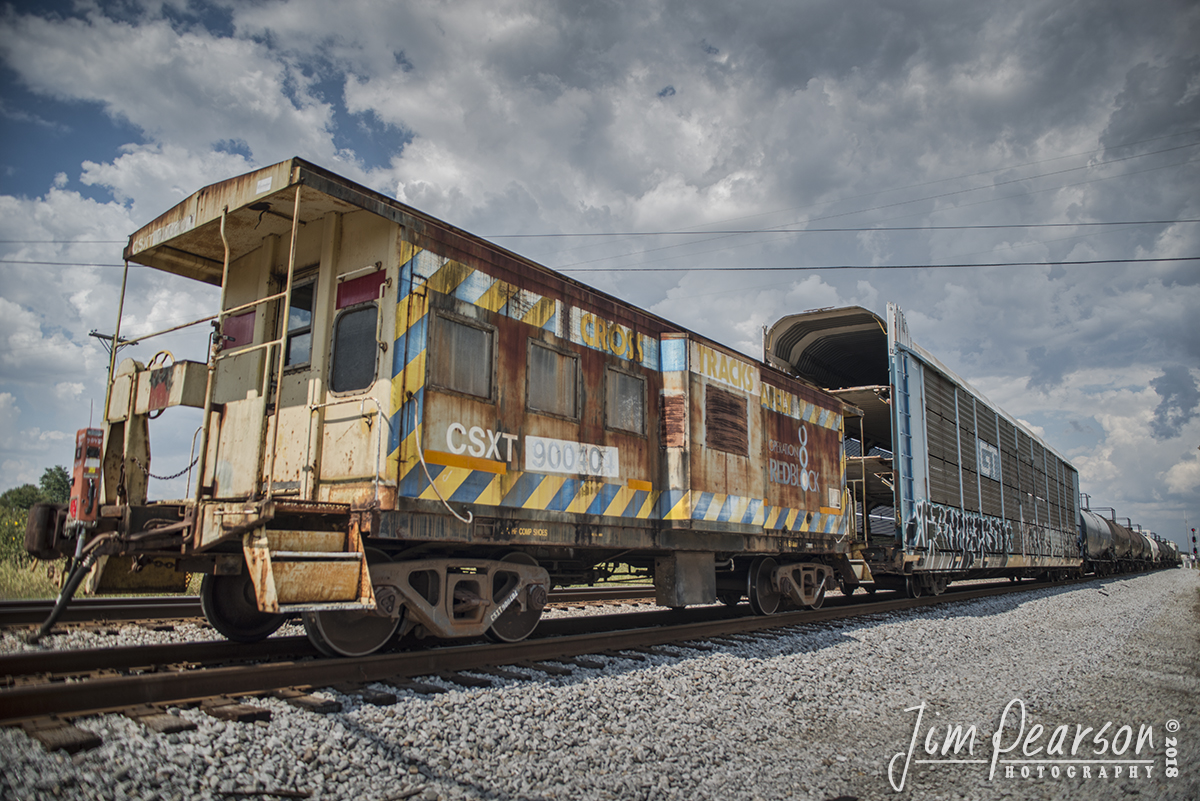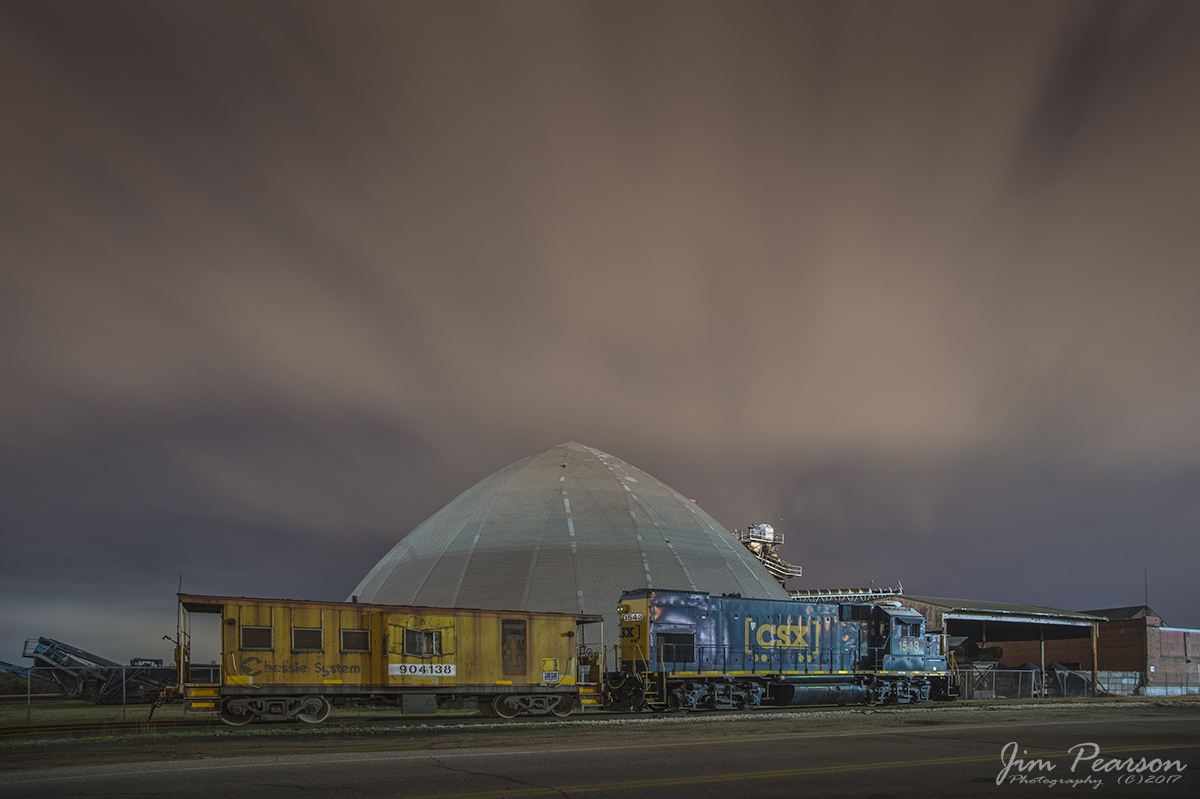CSXT 85 leads S991 as they cross the Gum Lick Trestle on a depressed flatbed at Kelly, Kentucky with an oversized load heading south on October 16th, 2024, on the CSX Henderson Subdivision. The load is traveling on KRL 204041, a Schnabel car with Red and Ready KRL 073 caboose trailing.
According to Wikipedia: A Schnabel car or Schnabel wagon is a specialized type of railroad freight car. It is designed to carry heavy and oversized loads in such a way that the load makes up part of the car. The load is suspended between the two ends of the cars by lifting arms; the lifting arms are connected to an assembly of span bolsters that distribute the weight of the load and the lifting arm over many wheels.
When a Schnabel car is empty, the two lifting arms are connected to one another and the car can usually operate at normal freight train speeds. Some Schnabel cars include hydraulic equipment that will either lift or horizontally shift the load while in transit (at very low speeds) to clear obstructions along the car’s route.
That is the case with this car as there was a crew on the caboose that shifted the load whenever necessary on meets or areas with close clearance. It was traveling at 25 mph on the mains and much slower through turnouts and switches.
Tech Info: DJI Mavic 3 Classic Drone, RAW, 22mm, f/2.8, 1/2500, ISO 140.



